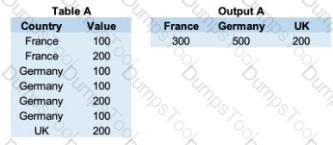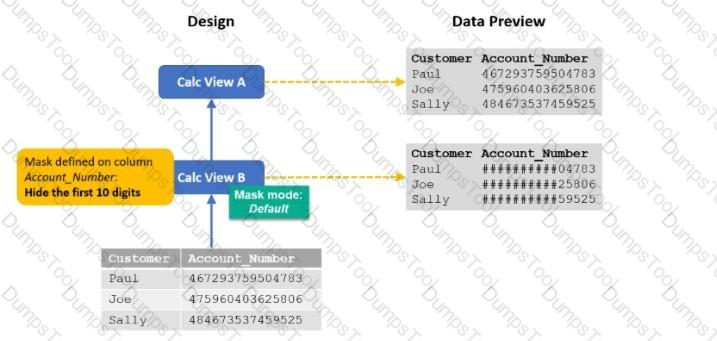In your calculation view, you want to consume a custom data source defined using SQLScript.In which type of object do you write your code?
Why would you set the "Ignore multiple outputs for filters" property in a calculation view?
What are the key steps to implement currency conversion in a calculation view?
You deleted the design-time file of a calculation view in your HDB module.What is the recommended way to ensure that the corresponding runtime object is also removed from the database?
At which levels of a project structure can you execute a deploy operation?Note: There are 2 correct answers to this question.
What are some best practices for writing SQLScript for use with calculation views? Note: There are 2 correct answers to this question.
You have configured static cache for your calculation view and run a query against it, but the cache results are not being used.What might be the reason for this?
You have imported a new calculation view in a folder that contains an .hdinamespace file. This calculation view consumes one data source, which is a table. When trying to deploy the calculation view, the deployment fails with a namespace-related issue.What could be the reason?Note: There are 2 correct answers to this question.
What options do you have to handle orphan nodes in your hierarchy?Note: There are 2 correct answers to this question.
Using the table in the diagram, you need to create a CUBE calculation view.

What is the simplest approach to create the output shown in the screenshot?
What is the SQL keyword used to process input parameters defined in a calculation view?
Why would you write your SQL code in a procedure instead of a function? Note: There are 3 correct answers to this question.
Your calculation view consumes one data source, which includes the following columns: SALES_ORDER_ID, PRODUCT_ID, QUANTITY and PRICE.In the output, you want to see summarized data by PRODUCT_ID and a calculated column, PRODUCT_TOTAL, with the formula QUANTITY * PRICE.In which type of node do you define the calculation to display the correct result?
What are possible consequences of unfolding?Note: There are 2 correct answers to this question.
Which database features are typically NOT required by analytical applications that run on SAP HANA Cloud?Note: There are 2 correct answers to this question.
What are the limitations of using a full outer join in a star join node?Note: There are 2 correct answers to this question.
You are deploying a new calculation view, A, that uses calculation view B, as shown in the diagram.

When you preview calculation view A, the account number is not masked.What could be the reason?